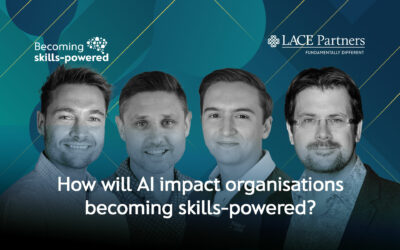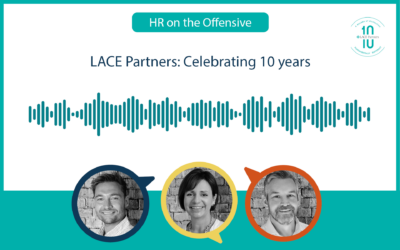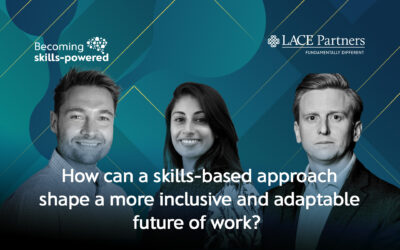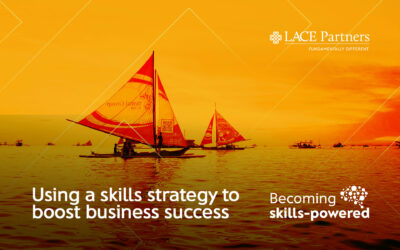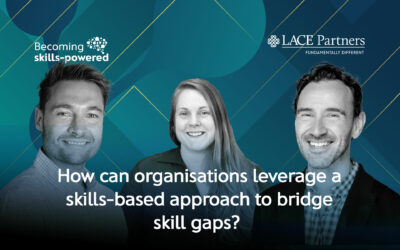In this week’s blog we ask our HR Technology experts about the importance of being Cloud ready. Is moving to the Cloud as easy as promised and how should you mobilise your Cloud transformation? This blog examines how to reduce risk when preparing for your Cloud journey...
Cloud readiness is often misunderstood. Today everyone wants to sprint to the cloud, and it is certainly a buyers’ market for HR technology. People want to get there quickly, easily, and painlessly, in line with the idyllic vision painted by their friendly Cloud sales teams. However, before embarking on what is really a complex business and technology transformation, it is important to be clear on how you will use Cloud and the resulting benefits. This includes having the conceptual design of your future state clear, written down, and bought into by your senior stakeholders. This is the promise you are making when you get your roadmap and business case agreed.
At LACE we think of Cloud readiness as the activities from your first Cloud transformation discussion to the system integration partner landing for implementation. Funding for this phase might be a single pot, or might be broken into smaller slices, such as business case, conceptual design, and selection. Regardless of how your funding mechanism works, this phase will typically include:
Defining your cloud strategy, roadmap, and business case
This defines how your proposed transformation investment will support your organisations business and people strategy.
Successful business cases typically look at reducing operating costs alongside driving increased workforce performance and helping to create a great place to work. Thoughtful use of Cloud technology can be a key enabler, but be realistic when articulating the benefits, understand the full cost of the new Cloud solution, and think holistically about what else is needed to realise the benefits. Test the market, review current contracts to understand exit clauses, and build in anticipated growth plans. Outline how you will measure the benefits you are promising.
Defining your conceptual design
This is the blueprint of your solution, building on your business strategy, people strategy, and operating model for HR, covering:
- Experience and high-level process requirements, knitting together the experiences you want to create for your workforce, the processes which will support them, and the requirements and digital enablers needed from your future cloud platform.
- Key functional and non-functional design decisions underpinning the future platform. For example, whether to use position management, clarity on where you want work to get done, is case management required, how to set up your data architecture to enable insights, the integration architecture, and how your Cloud wires into your broader enterprise landscape.
- A cloud support model enabling ongoing rapid adoption of relevant Cloud updates. Different to on-prem, with changed roles for HR, HRIS, IT, and the vendor(s).
- Defining your implementation plan, sourcing strategy and partner selection. Your conceptual design informs your implementation plan and phasing, the scope of products required, and which types of implementation partner to consider.
Cloud readiness is a broad set of activities. Aligning these with your funding gates can be an art as much as a science. No two organisations are starting from the same position or have the same mechanisms for approving major spend. To help manage this complexity, and sell the need for these activities to smooth the start of your journey, here are some of the common pitfalls this phase will help you avoid:
- Ambiguity on what you want from the new platform can result in expensive rework and missed opportunities to transform. Whilst Cloud is “standard”, it can be configured in many ways to achieve different business outcomes. Having clear key design decisions and a conceptual design will reduce the risk of missed opportunities and rework.
- Putting in new technology with the same old processes: Designing a new operating model, with the associated employee experience and processes, can be time-consuming. We are not going to say you “must” do this before moving to the Cloud. But we will say you should use this opportunity to drive changes to the way you operate, and to harmonise, streamline, and automate processes wherever possible.
- Forgetting to consider data. Data is the backbone of HR. We use data to aid business decisions, support the talent strategy, understand the employee base, and ensure folks are paid correctly. We know, no technology will fix poor data, but our experience consistently shows data, analytics, and the insights they can bring are treated as an afterthought. Avoid replicating your current data challenges in the Cloud. Spend time understanding and aligning your data and the reporting, analytics, and insights you need to make a difference. Be it the lack of standard job architecture, different ways of using (or not using) position management, or misalignment between Finance and HR hierarchies. Dial up your data savviness and make data a priority.
- Not understanding how the new Cloud wires into your landscape: No technology is an island. Understanding how your new Cloud platform fits within your enterprise landscape avoids capability gaps, process complexity, and integration nightmares.
- Paying for unused licences: Avoiding spend on unused licences can be a business case windfall. Having a clear approach to archiving, decommissioning, and licence release avoids potentially paying for two sets of licences.
Slightly tongue in cheek, but the benefit of keeping a sense of humour during your Cloud transformation journey cannot be underestimated. With any complex transformation covering people, data, process and technology, there will be days (or weeks) where you may find it hard going. Preparing for the Cloud, being Cloud ready, will help to minimise these days.
Do you have questions on what you have read? Reach out to Max Bailey, our HR Technology Advisory Director or Kayley Gaylor, our Senior Technology Manager to chat about being Cloud ready and what this might mean for you.

